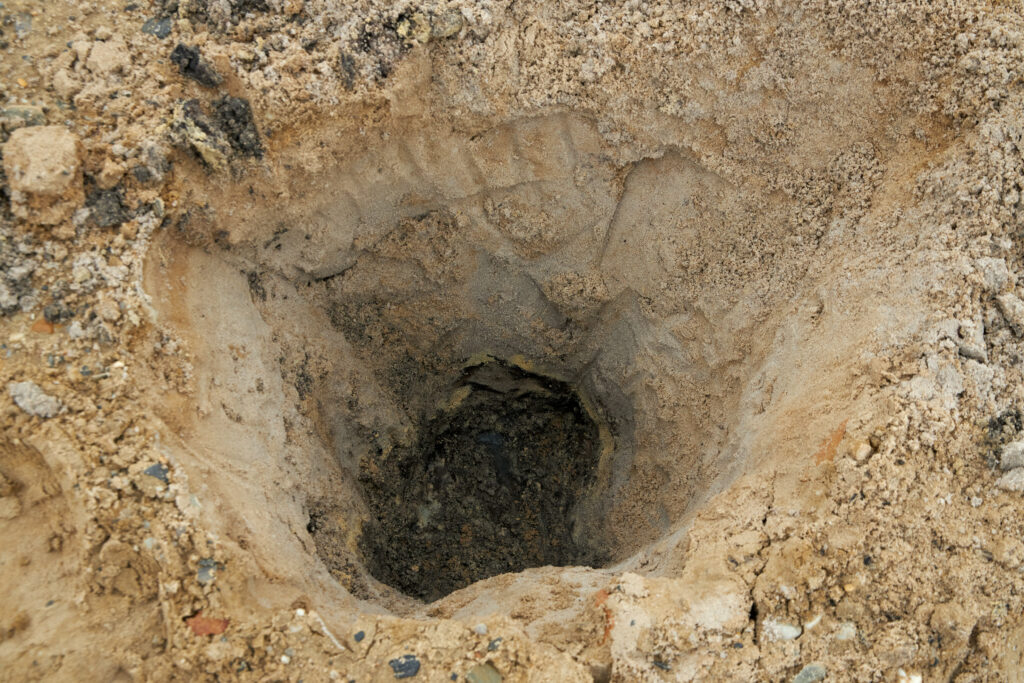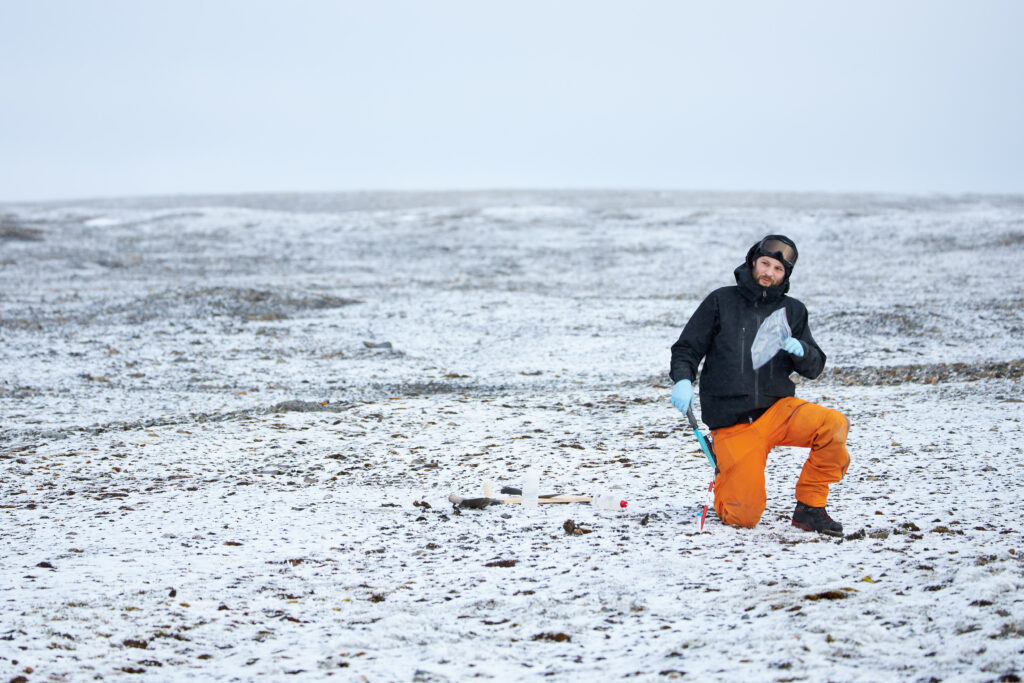77.76° North, 98.73° East – Sunny, -2.1 °C, wind speed: 3.1 m/s
Field work on the High Arctic Islands of Severnaya Zemlya
After successful visits on Vize and Graham Bell Islands, the terrestrial teams were back in the field on the Severnaya Zemlya archipelago. Between the 19 and 26 August, they had the opportunity to study five sites across Komsomolets, October Revolution and Pioneer Islands.
In addition to the surveys of plant distribution (described in the blog post of 17 August), researchers are studying the soils of the High Arctic Islands of the Kara and Laptev Seas. This involves digging a hole to collect soil samples along a vertical profile, from the top soil layer down to the permafrost. Permafrost has been found at depths of between 30 – 60 cm at the sites visited so far during the expedition. However, the main interest of the research is to understand the diversity and functioning of the soil microbiome. It addresses questions such as, how are microorganisms in Arctic soils distributed along a latitudinal gradient? What are the key drivers of the microbial diversity? Does the diversity on isolated islands differ from other regions in the Arctic? Air samples are also collected from above the sampled soils, using chambers and will be analysed for their CO2 concentration. This will improve our understanding of the role microorganisms play in local carbon cycling.
During the sampling at five sites on Severnaya Zemlya, 15 vertical profiles were dug and 45 soil samples collected. Once brought back to the Akademik Tryoshnikov, these samples are dried, sieved and filtered in the onboard laboratories in order to prepare the material for further analysis back on land. In the afternoon of 26 August, the expedition reached Cape Baranov Station. It is home to a broad team of Russian scientists and station operators including engineers, technicians, cooks and a doctor. It is one of only two permanent research facilities on Severnaya Zemlya. During the summer season, the station accommodates a staff of 30 people, which is reduced to 20 during the winter season. Cape Baranov Station was resupplied by the Akademik Tryoshnikov with tons of food, equipment and fuel. The unloading and transport of the cargo to the station lasted 36 hours, finishing on the evening of the 28 August.


Header photograph: Helicopter transporting cargo for the station on Cape Baranov.
Rights: © 2021 Swiss Polar Institute, CC BY 4.0 